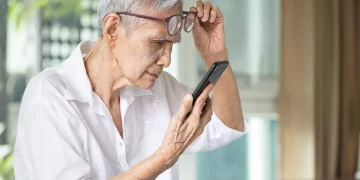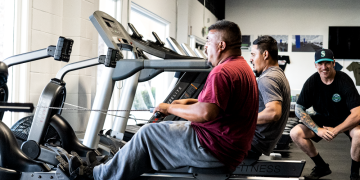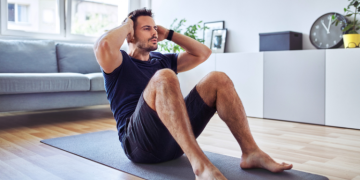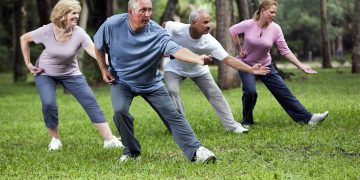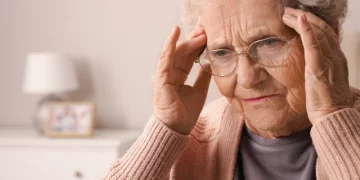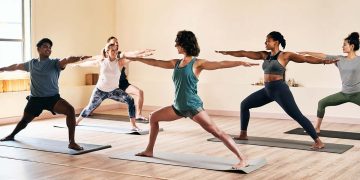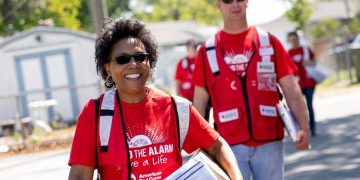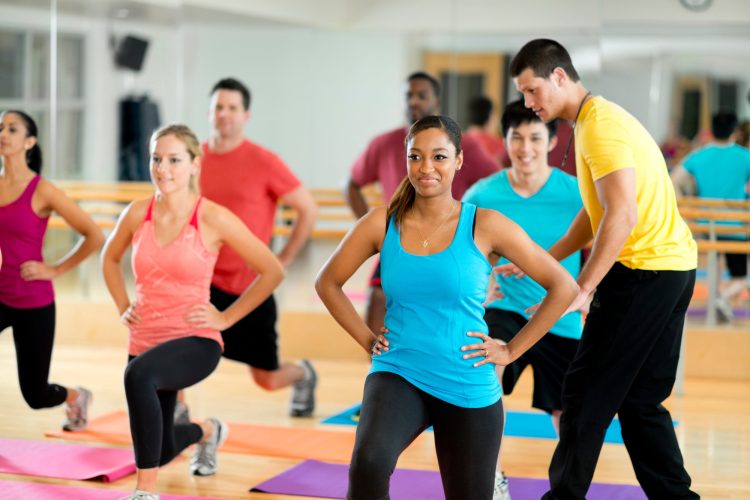In an era where loneliness has quietly become a public health epidemic, the power of community is more vital than ever—especially when it comes to mental health. While fitness is often viewed through the lens of physical transformation, it’s increasingly recognized for its emotional and psychological benefits. But when that fitness happens in a group setting—be it a spin class, bootcamp, dance session, or outdoor run—the impact goes beyond toned muscles or endurance gains. Group fitness is a potent tool for emotional resilience, confidence, and belonging. It reminds us that we are not alone in our pursuit of health, and that healing can happen in motion—together.
The Science Behind Movement and Mental Health
Before we explore the group dynamic, it’s important to understand how exercise itself benefits the mind. Physical activity releases endorphins—neurochemicals that relieve pain and stress—while also increasing levels of dopamine, serotonin, and norepinephrine. These neurotransmitters play key roles in regulating mood, sleep, and cognitive function. Studies consistently show that regular exercise reduces symptoms of anxiety and depression, improves sleep, and enhances overall emotional well-being.
But the magic doesn’t stop there. When movement happens in a communal environment, something additional clicks into place: the human need for connection. As social beings, we thrive in settings that foster shared purpose and mutual encouragement. This is where group fitness becomes more than a workout—it becomes a wellness ritual.
The Power of Shared Energy
Have you ever walked into a group fitness class feeling tired or anxious, only to walk out buzzing with energy? That’s not just adrenaline—it’s the effect of shared energy. Group classes tap into what psychologists call “collective effervescence,” a term coined by sociologist Émile Durkheim. It refers to the emotional high people experience when they engage in synchronized activity with others. Think of dancers moving in unison, runners cheering each other on, or a group pushing through the final minutes of a circuit together. That electric sense of unity activates feelings of joy, empowerment, and motivation.
In solo workouts, motivation often relies entirely on willpower. In group settings, that drive becomes collective. You’re less likely to quit when surrounded by others moving toward the same goal. And when you see someone else struggle but keep going, it normalizes your own discomfort. Suddenly, what felt hard becomes possible—and what felt isolating becomes shared.
Reducing Isolation Through Fitness Communities
One of the most insidious effects of modern life is social isolation. Whether caused by remote work, urban living, or the digitalization of social interaction, many people feel more alone than ever. Group fitness offers a meaningful counter to this isolation. It creates spaces where eye contact, encouragement, and laughter are part of the routine. Over time, familiar faces become acquaintances, then friends, and finally, part of your support network.
For individuals struggling with depression, anxiety, or low self-esteem, this sense of inclusion can be life-changing. Walking into a room where you’re welcomed, seen, and cheered on builds more than physical strength—it nurtures emotional resilience. Many fitness communities offer a sense of structure and stability, helping people feel grounded in their routines. And for those who find traditional social settings overwhelming, group classes offer low-pressure interaction with high reward.
Accountability and Consistency: The Community Effect
One of the biggest challenges in any wellness journey is consistency. Group fitness solves this in two ways: it adds structure through scheduled classes, and it adds accountability through relationships. When you know someone is expecting to see you—or when you simply don’t want to miss the shared momentum—it becomes easier to show up, even on tough days.
This type of “positive peer pressure” is unique to community workouts. It’s not about competition or comparison but about support and shared goals. You become part of something larger than yourself, and that sense of purpose can carry you through the inevitable dips in motivation.
Moreover, instructors play a critical role in this dynamic. The best ones are not just skilled in form and technique but in creating safe, welcoming environments. They remember your name, check in on your progress, and encourage you without judgment. Their leadership anchors the group and reinforces the emotional safety that makes people return week after week.

Group Fitness for Every Personality
A common myth is that group fitness is only for extroverts or high-energy types. But there’s a class—and a community—for every personality. Introverts often thrive in more structured or smaller group formats, such as yoga, pilates, or barre, where verbal communication is minimal, but the sense of connection is strong. Extroverts may gravitate toward high-energy dance or HIIT classes, where music and movement offer expressive release.
For people with social anxiety, the idea of group fitness might seem daunting at first. But paradoxically, it can be one of the most healing spaces. Unlike traditional social settings that rely on small talk, group workouts are purpose-driven and structured. There’s a shared task, minimal need for verbal interaction, and a natural bond formed through movement. Over time, as familiarity grows, so does confidence—and that often spills over into other areas of life.
Mental Health-Specific Group Programs
In response to growing awareness of exercise’s psychological benefits, many studios and gyms are now offering mental health-focused fitness programs. These might include trauma-informed yoga, mindfulness-based bootcamps, or support-group hybrid classes where physical activity is paired with open conversation. These programs intentionally create space for emotional processing alongside movement, offering tools for managing stress, anxiety, and emotional regulation.
Community-based fitness initiatives are also reaching underserved populations. From free outdoor bootcamps in public parks to nonprofit dance groups for trauma survivors, these programs use fitness not just as a wellness tool, but as a social justice strategy—bridging the gap between mental health support and physical access.
The Role of Group Fitness in Recovery and Resilience
For individuals recovering from addiction, trauma, eating disorders, or burnout, group fitness can be a powerful part of the healing process. The structure, consistency, and sense of community offer grounding. The physical movement helps process stored stress and trauma in the body. And the support from others—many of whom are also working through their own challenges—offers hope.
Importantly, these communities reinforce the idea that healing doesn’t have to be solitary. Too often, people feel they must fix themselves alone before “joining the world” again. Group fitness flips that script: by joining others, we often find the strength to heal. The simple act of showing up—even when you feel broken—can become an act of defiance against despair and isolation.
The Emotional High That Lasts
One of the most reported experiences after a group class is a post-workout emotional high. It’s not just the endorphins. It’s the psychological release of tension, the joy of shared accomplishment, and the unconscious processing that happens when we move in rhythm with others. This high can create emotional shifts long after the sweat has dried. It can shift a bad day into a hopeful one. It can pull someone out of rumination or self-criticism. And when experienced regularly, it can become a protective factor against chronic stress or depressive spirals.
In a time when mental health struggles are widespread and traditional therapeutic options may be inaccessible or stigmatized, group fitness offers a unique bridge. It doesn’t replace therapy—but it complements it. It offers structure when the mind is chaotic, connection when the heart is hurting, and movement when the body feels stuck.
Cultivating a New Definition of Fitness
Perhaps the most powerful outcome of group fitness is its ability to reshape what we think of as “healthy.” It teaches us that health is not just about aesthetics or strength—it’s about connection, joy, and community. A strong body is great, but a strong support network? That’s transformational.
We need more spaces where people can show up exactly as they are—no matter their age, size, ability, or background—and feel welcome. Group fitness, at its best, offers this. It says: You belong here. You’re not alone. Let’s move through it—together.






